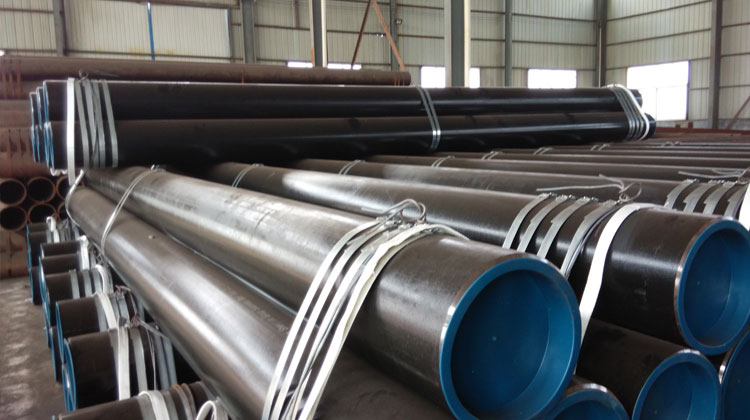What’s the Real Difference Between Schedule 40 and Schedule 80 Pipe?
Understanding the differences between Schedule 40 and Schedule 80 pipes is more than a technical trivia—it has a direct bearing on your project’s success. Whether you’re constructing water lines, industrial systems, or structural supports, choosing the right pipe schedule can determine the long-term strength, pressure rating, and long-term performance of the system.
At New Tech, we have learned first-hand how good piping selection can prevent costly repairs and optimize system performance. Let’s look at how Schedule 40 and Schedule 80 compare, when to use each, and how it relates to the products we sell like PPRC Pipes & Fittings.
What Is Pipe Schedule?
A Simple Explanation:
- The “pipe schedule” refers to the pipe wall thickness. It’s not measured in inches or millimeters—it’s a standardized number that engineers and contractors use to classify pipes.
- Schedule 40: Standard thickness for most residential and commercial use.
- Schedule 80: Heavier walls, for high-pressure or heavy-duty industrial use.
- Both schedules share the same outside diameter, but the inner diameter changes depending on the wall thickness.
How Does Schedule 40 Differ from Schedule 80?
1. Wall Thickness:
- This is the principal difference. Schedule 80 pipes have much thicker walls than Schedule 40. That is:
- Schedule 40: Thinner wall, more workable.
- Schedule 80: Thicker wall, higher pressure strength.
This has a direct impact on how much internal pressure a pipe can resist.
2. Pressure Tolerance:
- With thicker walls, Schedule 80 can handle more internal pressure. That’s why it’s used in such applications as chemical processing and heavy manufacturing.
- Schedule 40 is best for home and light commercial building.
- Schedule 80 is ideal for high-stress uses like chemical lines or compressed air systems.
3. Weight and Handling:
- Thicker walls also mean more material, which translates to Schedule 80 pipes being heavier.
- Schedule 40: Lighter, easier to ship and install.
- Schedule 80: Thicker, will need additional support or equipment.
4. Cost:
- The more material = the higher cost.
- Schedule 40: Cheap for everyday use.
- Schedule 80: More costly, but well worth it in high-stakes applications where safety is a concern.
- At New Tech, we guide our customers through when the additional cost of Schedule 80 is worth it and when Schedule 40 is the more appropriate option.
- Real-World Applications of Each Schedule
Where Is Schedule 40 Used?
Schedule 40 pipes are commonly found in:
- Home plumbing systems
- Irrigation pipes
- Ventilation systems
- Light chemical transport
- Pool systems
Applications that capitalize on the light weight and economy of Schedule 40 pipes.
Where Is Schedule 80 Used?
Schedule 80 pipes are used in:
- Chemical process plants
- Industrial fluid systems
- Compressed gas or air piping systems
- Heavy water pumping
- Subterranean high-pressure systems
Their thick walls provide strength and resistance to pressure.
Pipe Material Is Also a Factor:
Pipe schedule speaks of wall thickness, but pipe material also plays a role in performance. PVC, CPVC, steel, and PPRC Pipes all have different schedules.
At New Tech, our PPRC Pipes & Fittings are resistant to pressure and temperature, and free from chemicals. They’re typically used for domestic, industrial, and commercial cold and hot water systems.
Why Do These Differences Matter?
Safety and Longevity:
Using the wrong pipe schedule can lead to:
- Leaks
- Bursting under pressure
- Premature system failure
Efficiency and Performance:
Using a Schedule 80 pipe in a low-pressure system is overkill—unnecessary expenditure and making installation more difficult. On the other hand, using Schedule 40 in a high-pressure system can lead to failures.
Choosing the proper schedule, you:
- Save energy loss
- Maintain even pressure
- Minimize maintenance and repairs
How to Choose the Right Pipe for You?
Here’s an easy guide to help you:
Application TypetRecommended Schedule
Home Water SupplytSchedule 40
Commercial PlumbingtSchedule 40 or 80
Industrial Pressure LinestSchedule 80
Chemical TransporttSchedule 80
HVAC SystemstSchedule 40
Still not certain?
Special Advantages of PPRC Pipes & Fittings
In comparing pipe schedule, it’s also fascinating to talk about new pipe materials like PPRC Pipes & Fittings available at New Tech.
Why PPRC Pipes Are Revolutionary:
- Thermal Resistance: Can handle hot and cold water efficiently.
- Non-Corrosive: Resistant to chemical or hostile conditions.
- Lightweight: Faster installation than conventional Schedule 80 steel pipes.
- Eco-Friendly: Safe and recyclable for drinking water.
- Low Maintenance: Smooth interior surface prevents buildup and ensures consistent flow.
- All these attributes make PPRC a great alternative to traditional Schedule 40 and 80 options when you need performance as well as convenience.
- Last Thoughts: Smart Choice with New Tech
Both Schedule 40 and Schedule 80 pipes have their own position in the plumbing and piping world. Your application, pressure needs, and budget determine the correct choice. Schedule 40 is ideal for typical residential systems, while Schedule 80 plays important functions in high-pressure, industrial settings.
At New Tech, we don’t just sell pipes—we help you choose the optimal solution for your project. Whether you’re installing water systems in your residence or building an industrial pipe.
Four Quick Questions And Answer:
What is the difference between Schedule 40 and Schedule 80 pipe?
→ Wall thickness and pressure rating are the two biggest differences.
Which is better for residential plumbing—Schedule 40 or 80?
→ Schedule 40 is better for normal residential use.
When do I employ Schedule 80 pipes?
→ For industrial or high-pressure uses.
Are PPRC Pipes better than Schedule 80?
→ For most modern applications, yes—especially for reasons of weight, heat resistance, and corrosion resistance.


